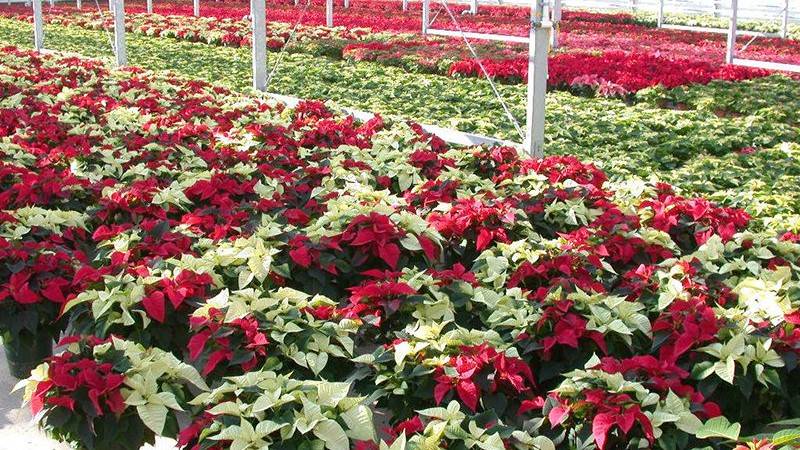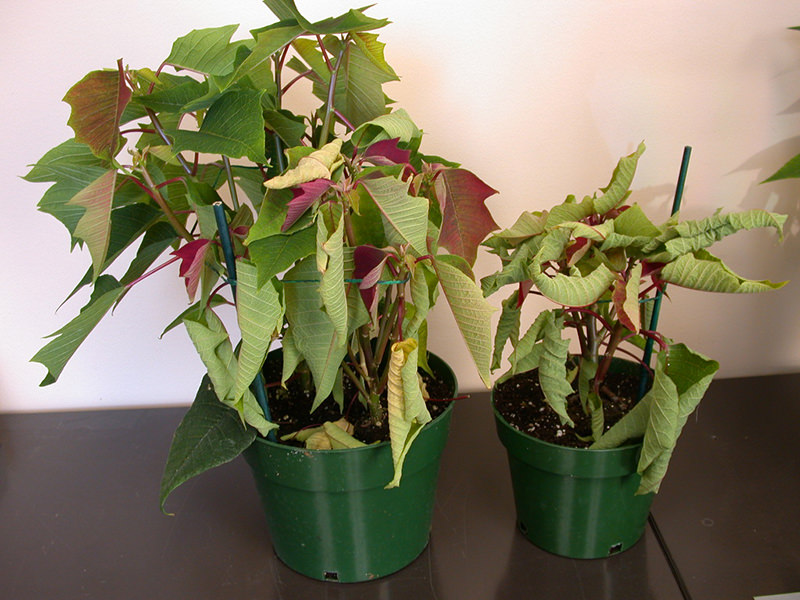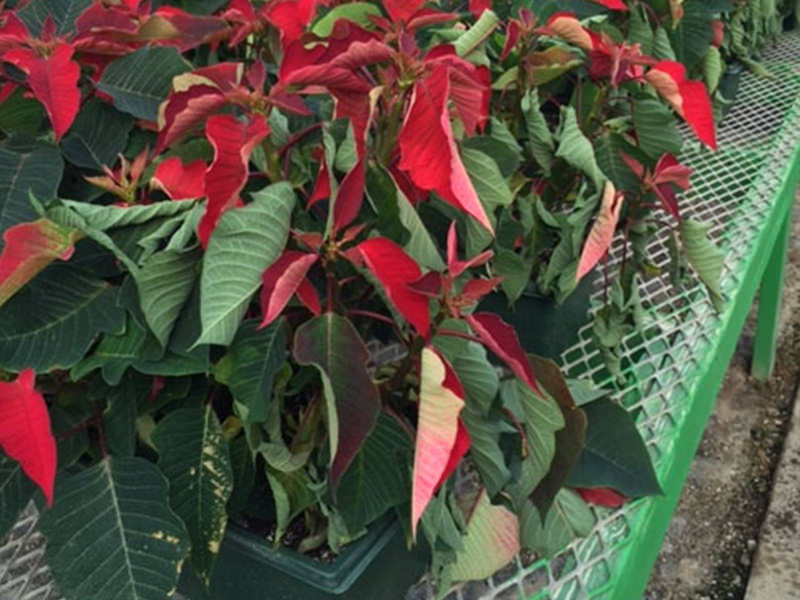PRO-MIX growing media for Poinsettias


Poinsettias bring beauty and colour to the Christmas season. However, many growers know that they can be challenging to grow. Source: Premier Tech.
Growers are getting ready for the upcoming poinsettia season and will soon be planting their crops. Therefore, now is a good time to review which PRO-MIX products are best for poinsettias. Keep in mind that most PRO-MIX products will work for poinsettias, but the ideal product depends on your growing conditions and watering practices.
Watering and Root Disease Concerns
During a typical poinsettia crop cycle, rooted cuttings are transplanted into pots in July when it is hot, and when days are long and conditions in the greenhouse favour the rapid dry down of the growing medium. However, when planting small rooted cuttings into large containers, the sheer volume of growing medium will retain a lot of water, making it easy to overwater the crop.
Watering must be monitored and the growing medium must dry down between waterings. You will know it is time to re-water when the colour of the growing medium's surface turns light brown or tan.
Once the poinsettias have rooted out to the sides of the container, they will use more water, aiding in the dry-down of the growing medium and reducing the potential for overwatering and root disease problems. This sounds good, but as the growing season progresses, day length becomes shorter, temperatures get cooler and there are cloudier, wet days in the fall and early winter.
Even though in early November the poinsettia crop is full size and has a well-developed root system, the plant is using much less water due to the weather and plants are no longer actively growing when the bracts start to color. The concern for overwatering and root disease re-emerges. Often, in the final weeks of the crop cycle, poinsettias are susceptible to overwatering and root disease issues, which can lead to crop losses. Selecting the proper PRO-MIX product can help reduce potential problems.


Benefit of Active Ingredients
Use active ingredients to help reduce plant stress and promote root health. We suggest using a PRO-MIX® product that includes AGTIV® STIMULATE™, which contains Bacillus to support a healthy root environment, AGTIV® REACH™, which contains mycorrhizae to enhance the uptake of plant nutrients and water, thereby reducing the effects of stress on the plant, or AGTIV® AMPLIFY™, wich combines the benefits of both microorganisms.
Ideal PRO-MIX Product for Poinsettias
Many growers have successfully grown poinsettia crops in PRO-MIX® BX and PRO-MIX® HPCC, but keep in mind that both products retain a good amount of water and dry out more slowly between waterings. If overwatering is a concern, then the best product is PRO-MIX® HP® AGTIV® AMPLIFY™.
PRO-MIX® HP® AGTIV® AMPLIFY™ contains extra perlite to reduce water retention and increase air porosity in the growing medium. Plant roots need oxygen, so the more oxygen that the growing medium provides after being saturated from watering, the less stress the plant roots have from asphyxiation. Less stress means the plant roots continue to use water from the growing medium, increasing the dry down rate, and they are less susceptible to attacks from root disease organisms.